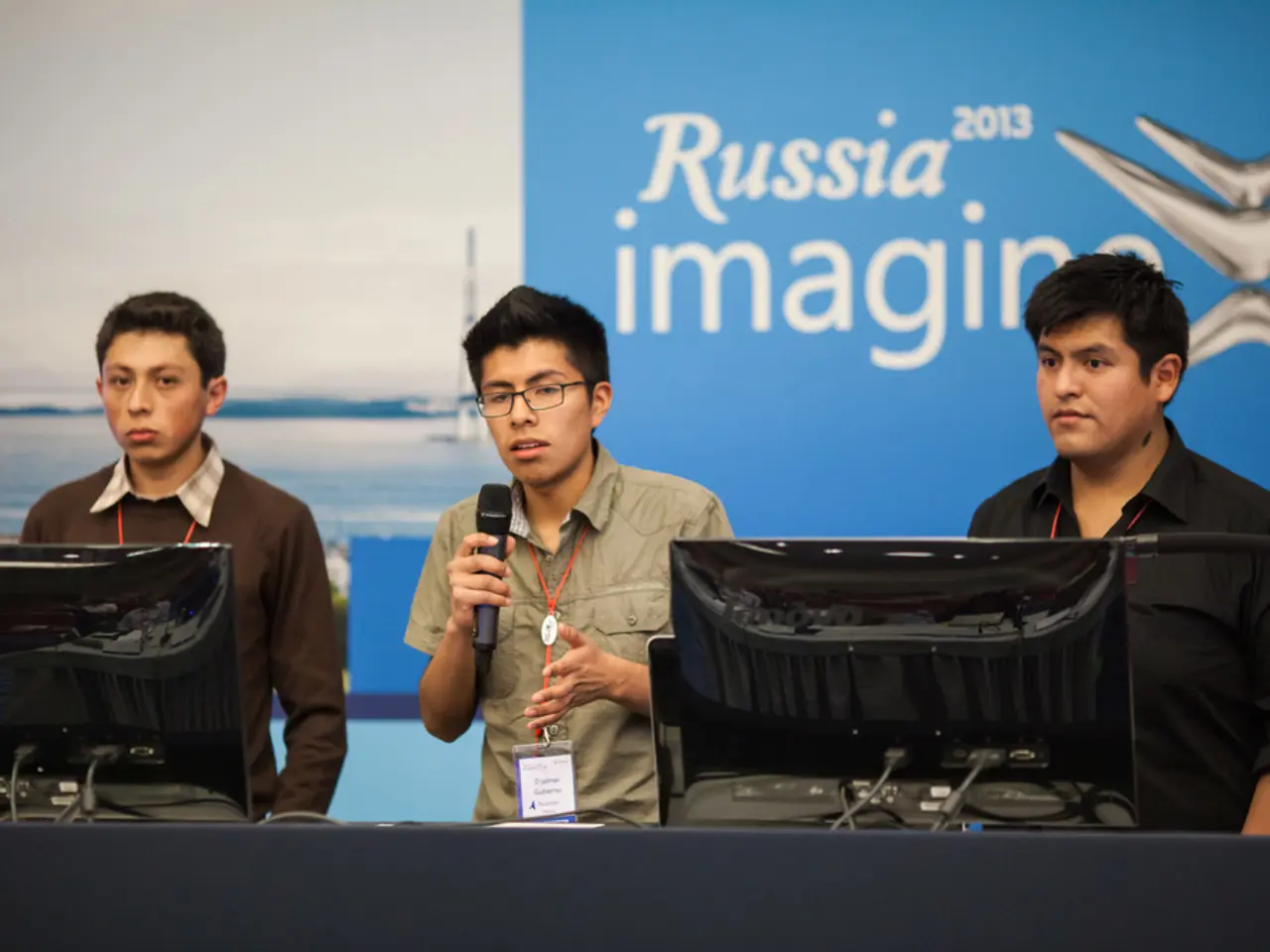Summarized Discussion Points from the 2024 AV/IT Conference
2024 AV/IT Summit Highlights the Future of AI-Driven Workplaces and Education
The 2024 AV/IT Summit, held at Barclays Center in Brooklyn, NY, on August 1, brought together industry leaders and experts to discuss the latest trends and strategies in AI-driven solutions, workplace redesign, collaboration between AV and IT experts, and technology integration in higher education.
Kevin Laugherty from CVS Health emphasized the importance of creating an environment where everything works together seamlessly, while Verrex's Ben Dandola-Grubb stated that the pandemic has made it clear that both AV and IT are necessary for organizations today.
Julian Phillips, the keynote speaker at the summit, linked AI's transformative power to past technological revolutions like the steam engine and electricity. Phillips also shared an example of an AI-generated promotional video of the Amalfi Coast, demonstrating the potential of AI in creative fields.
The panel discussed the need for effective collaboration between AV and IT experts, with a focus on understanding critical concerns such as uptime, security, and prioritizing network resources. Harmeet Bhatia from Amazon described a holistic approach that allows for adaptable work environments, while Matt Morgan from Ross Video emphasized the importance of robust communication systems in workplaces with a mix of remote and in-person work.
In higher education, the panel discussed the importance of evaluating the needs of different learners and creating supportive learning spaces. C. Ann Kelly from Yale University emphasized the need to make schools more accessible, not only to comply with ADA regulations but also to enhance the learning experience for all students, including those with disabilities or language barriers.
Pace University's George Chacko advised providing accessibility discreetly to avoid singling out students. Erin Maher-Moran, IT manager of classroom technology at Johns Hopkins University, convened a panel to discuss the roles of AV/IT technology in modern higher education classrooms and campuses. Closed captioning, live translation, and various AI technologies were discussed as ways to create a more inclusive learning environment.
Rich Miller from Pace University stressed the importance of introducing technology that faculty members feel comfortable using. The panel at the 2024 AV/IT Summit also discussed the importance of achieving equity in workplace design.
The key insights and strategies from the 2024/2025 AV/IT Summits regarding AI-driven solutions, workplace redesign, collaboration between AV and IT experts, and technology integration in higher education focus on the following points:
AI-Driven Solutions: - AI is being integrated into AV workflows to create adaptable, cloud-compatible, and AI-ready systems that evolve with technology changes, supporting automation and personalization such as context-aware digital signage and enhanced learning experiences. - AI tools improve user experiences by analyzing patterns to tailor educational content and enhance digital agility in workplaces and classrooms.
Workplace and Educational Space Redesign: - Workplaces and learning environments need redesign to embed AV and IT technology seamlessly, supporting hybrid work and smart conferencing solutions that enhance collaboration and engagement. - In higher education, digital transformation driven by AI and cloud computing enables flexible educational resources and personalized learning aligned with workplace demands.
Collaboration Between AV and IT Experts: - Stronger collaboration is crucial; AV should be integrated within IT strategies, not treated separately. Treating AV as an operational expense with planned upgrade cycles ensures security and feature currency. - Early involvement of integrators in design processes avoids costly reworks, reduces system complexity, and aligns AV implementations better with business goals.
Technology Integration in Higher Education: - Universities face challenges adapting to Industry 4.0 by integrating disruptive digital technologies like AI and cloud computing for Education 4.0, enabling personalized learning and efficient administrative processes. - AI helps innovate teaching methods and automates tasks, facilitating an effective transition to digital educational environments and fostering skills needed in modern workplaces.
Additional Strategic Themes: - There is a shared emphasis on standardizing AV components to simplify servicing and training, ensuring system adaptability over time. - Summits highlighted future trends including AI’s role in smart cities, digital signage, and the convergence of multiple emerging technologies such as IoT and 5G, which collectively influence AV/IT integration strategies in business and education sectors.
In summary, the strategy is to create AI-enabled, cloud-friendly AV systems integrated with IT, designed early with integrators, supporting hybrid and personalized educational/workplace experiences, while adopting planned upgrade cycles and standardization to maintain agility and security. This holistic approach addresses both technological and organizational challenges in higher education and enterprise environments.
- As the AV/IT Summit demonstrated, AI-driven solutions will play a significant role in future business environments, enhancing digital workplaces by creating AI-ready systems that adapt with technology changes and support automation and personalization in various fields, such as context-aware digital signage and learning experiences.
- In the realm of education and self-development, AI will facilitate digital transformation in higher education by creating more flexible educational resources, aligning learning with workplace demands, and fostering skills necessary for modern workplaces through efficient administrative processes and innovative teaching methods.




